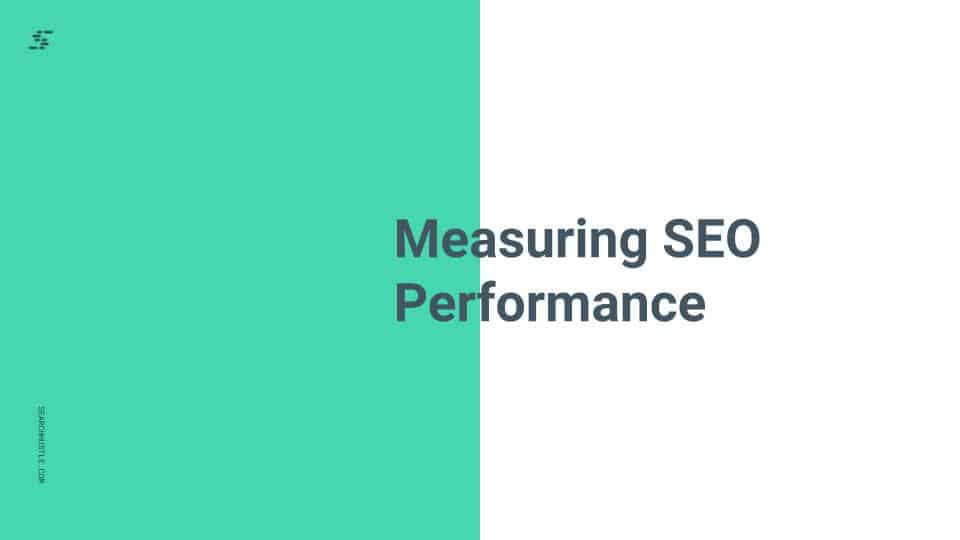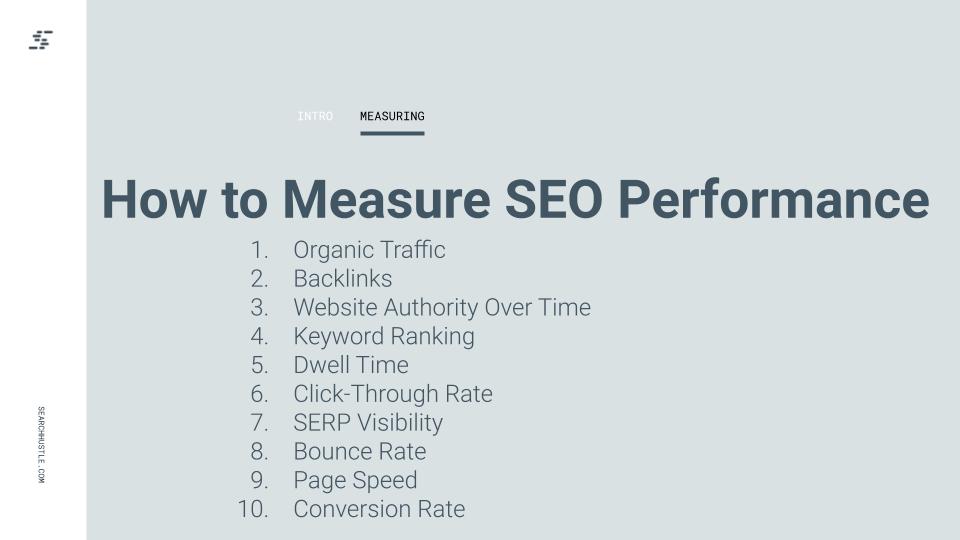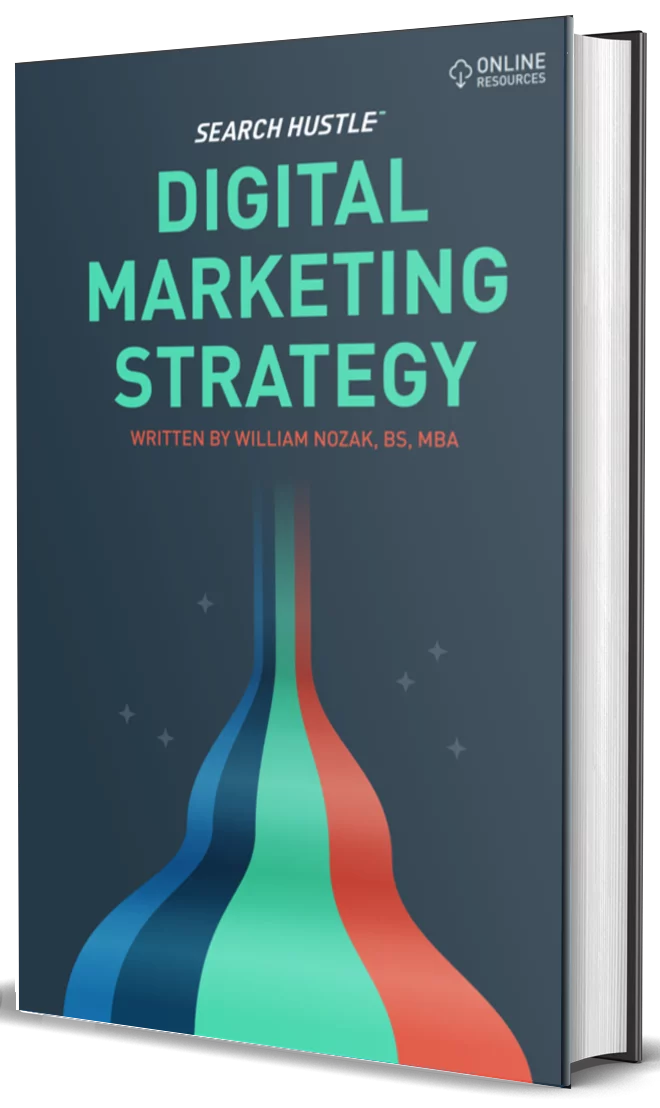Measuring SEO Performance
After weeks or even months of hard work and tens of thousands of dollars of investment in search engine optimization, how do you know it was worth it? SEO can feel like a waste of time and money if you don’t accurately track your growth across the board. What was your digital footprint or SEO score initially, and what is it now? Is this translating into more impressions, clicks, leads, and sales?

How to Measure SEO Performance
There are ten core ways to measure the SEO performance of a site over time. These areas are important to track whether you’re an agency working on another company’s behalf or if you are the in-house SEO specialist for an organization.

Organic Traffic
At its core, SEO is all about organic traffic. Pay-per-click campaigns can deliver quick results – but they’re expensive. Moreover, the leads from this part of the strategy will stop once you pause the campaign. Organic traffic is more of a constant; it’s traffic that finds a website, social media, or directory through search.
SEO improvements tend to last (at least until the next update). Although algorithms change, you can expect a well-built site to continue attracting relevant visitors. So, it’s best to have a live site that is regularly updated and continually optimized for SEO. Google Analytics can track a site’s organic traffic over time, giving a 1,000 to a 10,000-foot view of its SEO performance.
Backlinks are another great piece of data for measuring a site’s growth. For years, backlinks will continue contributing to a site’s domain authority. Having a website listed on numerous databases and directories is valuable and can’t be overlooked.
Engines continually come out and say backlinks are less and less meaningful. It’s more accurate to say links are not created equal. We certainly understand why Google is trying to pull this ranking factor back some – as black-hat SEO has forced Google to ease up on the value it places on backlinks due to PBN (private blog network) usage, spammy directories, and other techniques that are designed to trick algorithms versus provide a truthful picture of a website’s E-A-T (Expertise, Authority, & Trust). Remember, content is king, backlinks are necessary, and always focus on the end user’s experience.
Website Authority Over Time
Page Authority and Domain Authority summarize a page or website’s SEO value. Moz created these values to assess how likely a page will rank in the SERPs. Moz bots aim to value your site in the same way, a search engine does. This score ranges from 1 to 100 and is based on their Link Explorer Web Index. Although it is not a ranking factor, it does assign a value to your backlinking, site age, and content value – which can be tracked over time and compared to your competitors.
Keyword Ranking
While a site’s overall organic traffic offers a comprehensive view of its SEO efforts, individual keyword rankings are another KPI worth tracking. Good SEO should be in tandem with well-researched keywords/topics, followed by increased SERP positioning.
The first step in an SEO strategy is identifying the optimal keywords for your industry. Then, those short and long-tail keywords should be infused into the relevant aspects of your digital footprint. From the copy you write to the URL slugs, meta descriptions, local SEO, social media strategy, hashtag strategy, video strategy, and ads.
Dwell Time
The amount of time that a user spends on a page is immensely important. It directly signals how well the content matches the searcher’s needs. A high dwell time signals that searchers are finding great value in your content, and that your investment in content has been well worth it. A low dwell time shows that somewhere along the line, you missed the mark (or content is a mismatch for the searchers intent – in which case the engines will reset the page’s SERP positioning).
It should be noted some high bounce rate, low dwell time pages are still capable of meeting a clients needs. Pages that aren’t capturing readers’ attention should be beefed up with more robust and relevant content. Time spent on page can be tracked through Google Analytics under Behavior Overview.
Click-Through Rate
CTR represents the percentage of users who visit your site after a search. For example, if a page shows up in the SERP 1000 times a week, but only 25 people click on it, that page has a 2.5% CTR. As discussed, 2.5% is the average CTR of a page in the tenth position on the first page of Google. So, moving up in the SERPs is vital to improve your CTR. You can check and track this metric in Google Search Console under the Performance section.
SERP Visibility
It all comes down to the SERP. The search engine result page is what the searchers are looking at. They’re trying to find you; either you’re on it or not. If a website isn’t visible in the SERPs, then the SEO strategy needs to be adjusted. High dwell times, fast page speeds, and low bounce rates will all indicate that you’re doing something right with respect to the site experience matching a user’s intent. Improving your ranking takes lots of research, quality work, and the ability to flex and make changes over time.
Bounce Rate
Bounce rate represents the percentage of users who visit a site but leave without clicking any additional pages or interacting. Sites should be immersive, with several cross-referenced pages that encourage visitors to dive deep into the content and investigate the site further. A quality website will have lots of easily discoverable content and a layout that is attractive, with page speeds that don’t turn people off. Google Analytics calculates bounce rate so you can make adjustments that improve the site experience for visitors.
Page Speed
How quickly a page loads has a direct impact on SERP performance, dwell time, and bounce rate, so it’s very important to optimize a site and all its images. Image SEO is time-intensive, but very important because searchers who visit a site and can’t get it to load quickly will bail and look for a better-optimized experience.
A study by Portent shows that faster load times directly correlate to transaction conversion rates (TCR). Pages with a 0-2 second load time have between a 4.64% and 8.11% TCR, while pages with a 3+ second load time are all under 3%.
Google’s PageSpeed Insights tool allows users to check the speed of their site and assigns a score of 0 to 100%. 90% or better is considered great, the 50-90% range needs further development, and a 50% or lower needs to be optimized ASAP.
Track your percentage over time and see how much your bounce rate, dwell time, and conversion rates improve. This is an example of trackable metrics that show how efforts are moving the needle – that will need to be visible or presented in other dashboards than Google Analytics. Hopefully we see the fruit of our efforts in Google Analytics, but occasionally, we don’t and need to have other documenting and dashboard views to provide those efforts/optimizations to managing partners/parties.
Conversion rates are vital too. These equations show how SEO strategies are impacting or will impact the bottom line. How many people are finding your site through organic searches today? How does channel traffic overlap? For example, organic and social media, organic and CPC, etc.
Marketing efforts notoriously rely on Last Click Attribution. So often, we miss out on the “marketing recipe.” This is why tracking marketing efforts and conversion rates is an excellent way to connect the dots of success. A marketing strategy is elevated by tracking. Marketing efforts can be doubled, doubled back, or iterated upon where we have conversion rate data available.
All data points are self-serving and almost meaningless without context. Some activities are potent indicators of a successful digital marketing strategy and can be found or created in Google Analytics:
- Destination – A specific page load.
- Duration – The amount of time users spend on a site.
- Pages per Session – The number of pages a user visits throughout the site during a single session.
- Event – A specific action is triggered, such as filling out a form or purchasing.
Remember, SEO is a marathon, not a sprint. Consider the parable of the tortoise and the hare. Pay-per-click campaigns are the hare, and SEO is the tortoise. PPC can get you quick results, but it can be a costly acquisition strategy. SEO is a long game. Slow and steady wins the race and can also produce significant returns on investment over time.
CRO focuses on the visitor and how to turn them into customers more effectively. Whether filling out a form, subscribing to an email list, or taking advantage of a free trial.
Why is CRO Important?
CRO enables a business to lower customer acquisition costs by getting more value from the traffic we have. Optimizing your conversion rate can increase revenue per visitor.

Ready to Take Your Search Hustle Further?



